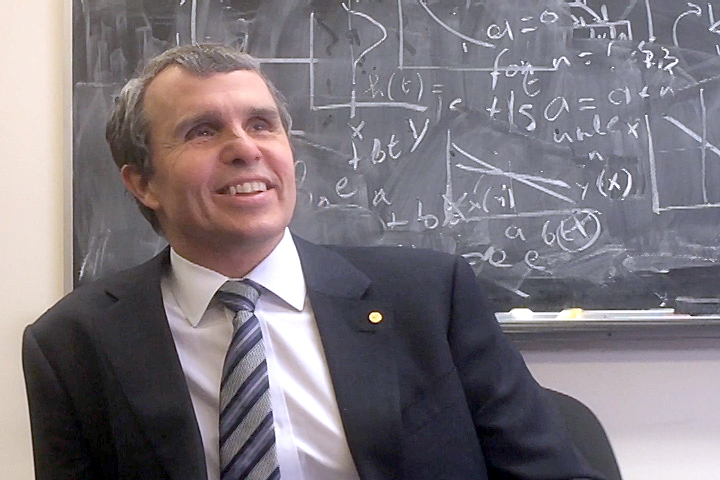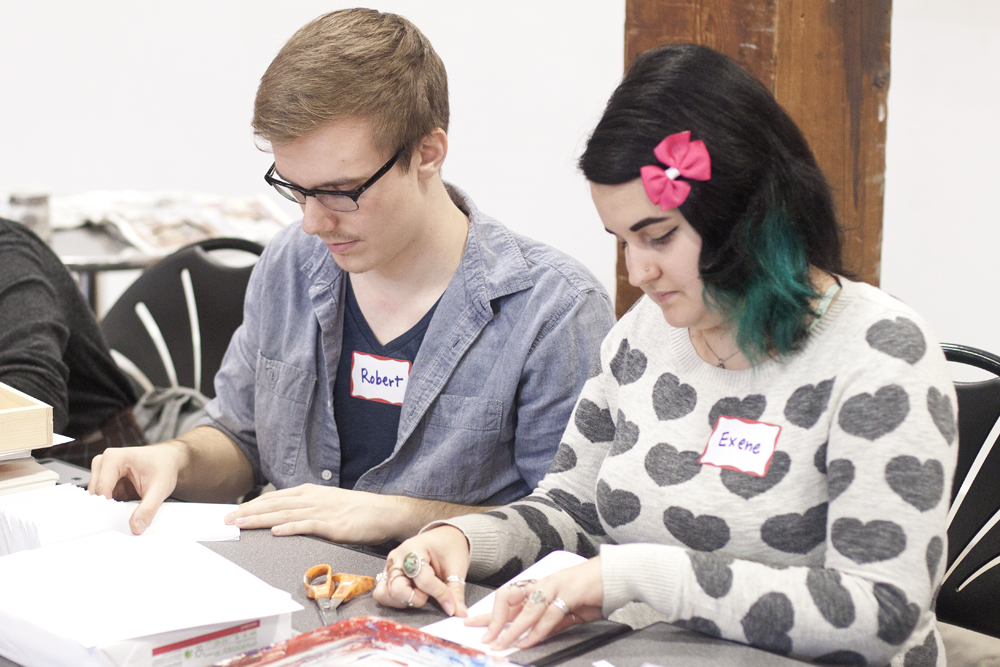“I would never call myself a chemist,” said Nobel Prize in Chemistry 2014 recipient Eric Betzig.
Betzig was this year’s speaker at the annual Mark Gurevitch Memorial Lecture Series, hosted by the Physics Department at Portland State. During his lecture at Hoffman Hall on May 14, Betzig spoke about his career and his prize-winning work.
Breakthroughs in optical microscopy, credited to Betzig, have allowed biologists to see living cells at smaller scales than ever before. Scientific publications like the Royal Society of Chemistry’s Chemistry World have described his work as revolutionary. Betzig is based at the Janelia Farm Research Campus of Howard Hughes Medical Institute in Ashburn, Virginia.
When introducing Dr. Betzig to the lecture audience, Portland State Professor of Physics Erik Bodegom joked about the multidisciplinary aspect of Betzig’s work, describing him as a physicist who won the Nobel Prize in chemistry for solving problems of biology. In an interview, Betzig described himself as an engineer and a tool builder.
“They can call it whatever they want, you know,” said Betzig. “I think with both academia or with the Nobel Prize, these arbitrary boundaries separating disciplines of science are an anachronism. In the 21st century, we’re all just physical scientists of one sort or another.”
Betzig shared the Nobel Prize with two other scientists—Stefan Hell and fellow Cornell alumnus William E. Moerner—for new techniques in observing living cells at high resolution, according to the Nobel Prize official website.
Betzig emphasized that the focus of his work was to make it possible to see not only high resolution images, but also 3-D video of sub-microscopic, or nanoscale, processes in living cells.
“Life is animate, and you have to be able to get high resolution imaging across all four dimensions of space-time,” said Betzig. Videos using Betzig’s technique are available online.
While acknowledging that it may come across as “egotistical,” Betzig said that he feels like Galileo Galilei, the father of modern astronomy, or Antonie van Leeuwenhoek, the father of microbiology. He explained that the techniques he developed make it possible to see things never before seen.
Portland State University has a history of imaging research, beginning with the late professor emerita Gertrude Rempfer. Rempfer did research in electron microscope technology at PSU, until weeks before her death in 2011 at 99 years old.
According to Associate Professor of Physics Erik Sánchez, “What Gertrude Rempfer worked on was the ability to look at biological samples … and being very gentle on it, while in the vacuum, instead of bombarding it with tons of electrons.”
Sánchez explained that gentle treatment of samples is what makes it possible to watch biological processes in action. “One of [Betzig’s] biggest concerns is how much light other methods use. What happens is, you end up frying the sample completely. Betzig is forcing people to look at that more,” said Sánchez.
Physics graduate student Michael Hopkins also does research in nanoscale imaging at PSU, and has been following Betzig’s work for years. According to Hopkins, “[Betzig] is one of the luminaries.”
Hopkins pointed out that Sánchez is another pioneer in this field. “Erik Sanchez was doing NSOM [Near-field scanning optical microscopy] right around the time that Betzig was,” Hopkins said.
Offering a word of advice for students in scientific fields, Betzig said, “The benefit of going into a scientific career is to not compromise. Be your own person and carve your own path, and work hard so that you don’t have to knuckle under.”
Watch the interview with Betzig on our Vanguard Online channel:






